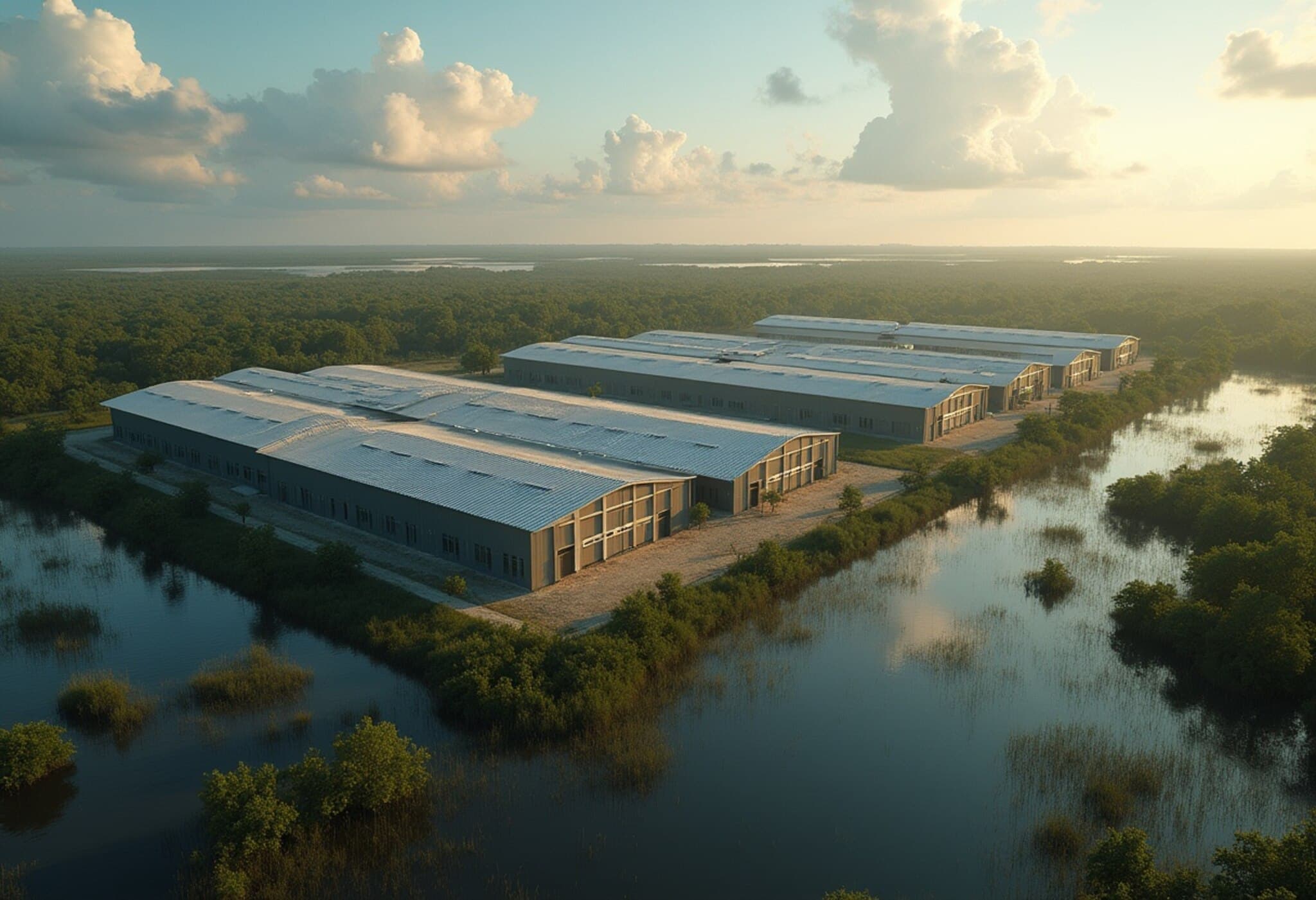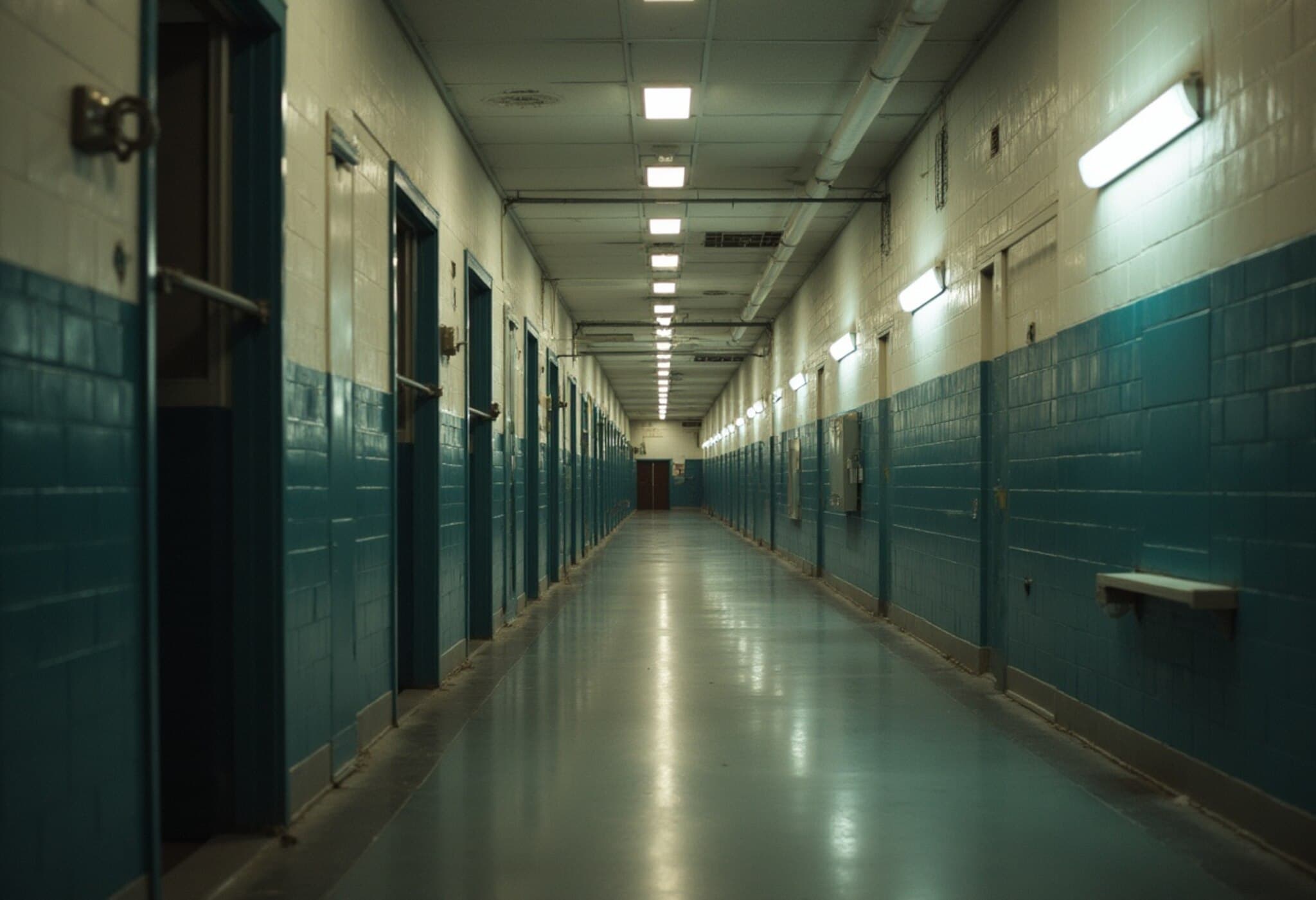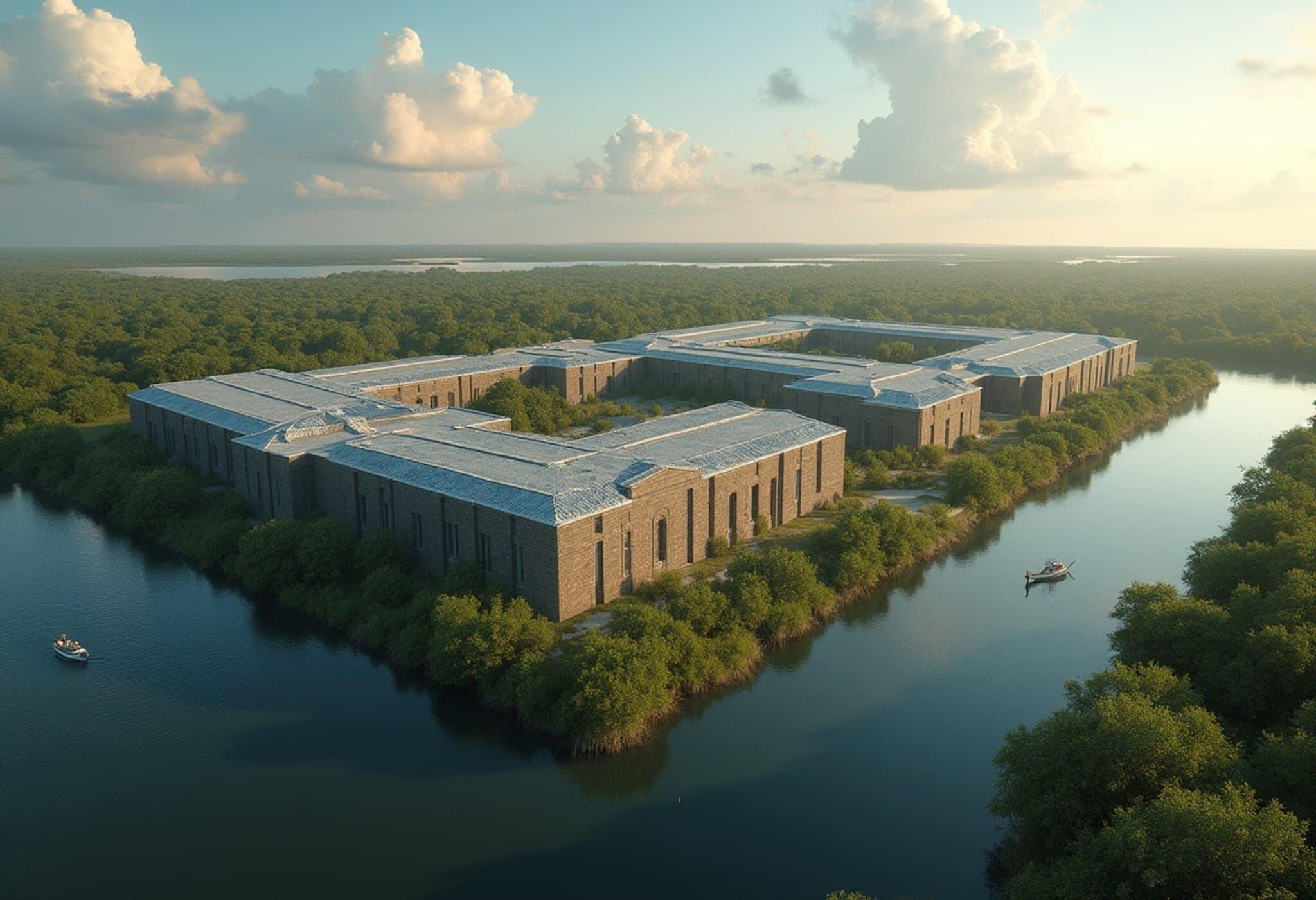Federal Judge Orders Temporary Pause on 'Alligator Alcatraz' Construction in Florida Everglades
A federal judge has temporarily halted construction at a contentious immigration detention facility poignantly nicknamed “Alligator Alcatraz,” located deep within Florida's Everglades. The ruling on August 7, 2025, comes amid intense legal battles over whether the state-managed site violates critical environmental protections.
Understanding the Legal Standstill
U.S. District Judge Kathleen Williams issued a temporary restraining order preventing any new construction activities—such as filling, paving, or infrastructure development—at the detention center for two weeks. However, the facility can continue operating and housing detainees under U.S. Immigration and Customs Enforcement (ICE).
During the hearing, Judge Williams underscored the permanence of any construction, noting that once built, structures at this environmentally fragile location would be effectively irreversible. This informed her decision to impose immediate limits while the court weighs the broader injunction requests.
Environmental and Indigenous Groups Raise Alarms
Environmental advocates and the Miccosukee Tribe have spearheaded litigation challenging the detention center’s impact on sensitive wetlands. These wetlands are home to endangered species and fragile ecosystems that have been the focus of multibillion-dollar restoration efforts.
- The plaintiffs argue that the construction violates the National Environmental Policy Act (NEPA), which mandates federal agencies to assess environmental impacts and engage public participation for major projects.
- They contend that despite the facility being state-built, the federal government’s role in immigration enforcement means NEPA applies.
- Opponents warn of irreversible damage to an already vulnerable ecosystem, potentially setting a dangerous precedent for future development in protected areas.
State vs. Federal Jurisdiction: A Complex Intersection
Florida’s legal representatives argue that because the state's government is responsible for the facility’s construction and operation, NEPA does not apply. Meanwhile, plaintiffs emphasize that immigration enforcement remains a federal responsibility, inherently linking the facility to federal oversight.
Judge Williams described the detention center as at least a joint partnership between state and federal authorities, complicating claims that NEPA is irrelevant. This nuanced take heightens the complexity surrounding environmental and legal accountability in such mixed-jurisdiction projects.
Dual Legal Fronts Against the Detention Center
This environmental lawsuit is only one of two major legal challenges facing the controversial facility, built over a month ago on the remote Dade-Collier Training and Transition Airport airstrip, owned by Miami-Dade County but legally situated in Collier County.
Separately, civil rights groups have filed suit alleging violations of detainees’ constitutional rights, including restrictions on legal representation, prolonged detention without charges, and canceled bond hearings. That case is scheduled to be heard on August 18, adding further scrutiny to the facility's operational practices.
Venue Disputes and Political Context
Federal and state attorneys have contested the choice of venue, arguing that the lawsuit should be transferred based on the detention center’s geographic location within Florida's Middle District rather than the Southern District. Judge Williams has yet to rule on this procedural argument.
Contextually, Florida’s rapidly expanding detention infrastructure—highlighted by preparations for a new center at a Florida National Guard training base in North Florida—reflects Governor Ron DeSantis's aggressive immigration enforcement policies. These developments energize debates over state-federal roles and environmental stewardship.
Environmental Implications Beyond Florida
The controversy surrounding "Alligator Alcatraz" reflects broader nationwide tensions as states take increasingly proactive—and often contentious—steps in immigration enforcement, sometimes at odds with environmental and civil liberties advocacy.
Experts warn that the lack of transparent environmental assessments risks long-term ecological harm, undermining restoration efforts aimed at sustaining the Everglades' biodiversity and function. Furthermore, indigenous communities like the Miccosukee face cultural and environmental impacts that receive little spotlight in mainstream policymaking.
What Comes Next?
With the temporary restraining order in place, a pivotal hearing on a preliminary injunction will determine whether construction halts permanently pending a full trial. Both environmental and civil rights dimensions of the case underscore complex intersections of law, policy, and human rights in immigration enforcement.
As the nation grapples with immigration challenges, the unfolding debate at the Everglades site serves as a potent example of how environmental justice and immigration policies are increasingly intertwined.
Editor’s Note
This developing story raises crucial questions about the balance between national security, state authority, environmental protection, and indigenous rights. The “Alligator Alcatraz” case highlights the often-unseen environmental costs of immigration enforcement infrastructure. Readers should consider how ecological considerations can be meaningfully integrated into immigration policy, particularly in ecologically sensitive regions.
Furthermore, it prompts examination of legal jurisdiction complexities when state and federal governments jointly engage in such projects. The outcome could have lasting implications for future detention center constructions and the safeguarding of America’s natural landscapes and civil liberties.



















